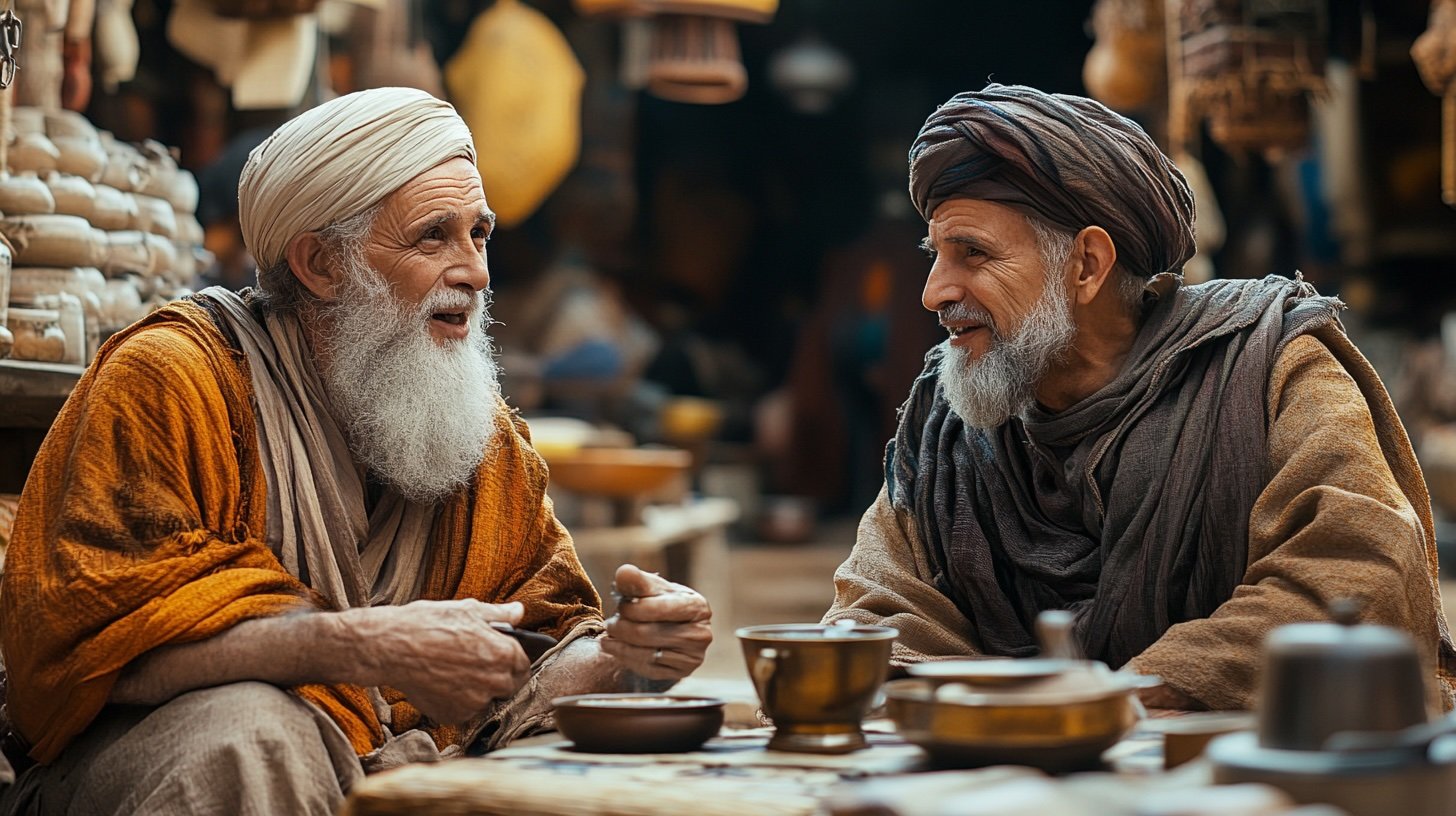The Lost Cafés of the Silk Road
There was a time when the best coffee in the world wasn’t being debated in hipster cafés, but along the winding, treacherous paths of the Silk Road. Before there was Wi-Fi, before there were oat milk lattes with cinnamon dusting, there were bustling trade routes where weary travellers stopped to rest, swap stories, and—most importantly—drink coffee.
The Silk Road was many things: a highway of commerce, a bridge between civilisations, a super-spreader event for ideas, spices, and the occasional bout of plague. But it was also the birthplace of the first international coffee culture. Long before your favourite café chain tried to convince you that your double shot espresso was a divine experience, merchants, scholars, and wanderers were sipping coffee in roadside caravanserais, debating politics, poetry, and the price of silk.
Picture it: A dusty outpost on the road between Samarkand and Baghdad. A merchant from Persia sits cross-legged, recounting his recent journey through the Hindu Kush. A Chinese scholar listens, sipping a thick, dark coffee infused with cardamom, while a trader from the Mediterranean throws in his opinion about a new route that might bypass the Mongol strongholds. The air is thick with the scent of roasting beans, the distant aroma of lamb skewers, and the ever-present dust of the road. The conversation shifts seamlessly between languages, a linguistic cocktail of Arabic, Persian, Chinese, and Greek, as deals are struck and alliances formed, all over a steaming cup of coffee.
These cafés—if they can even be called that—were nothing like the polished, ambient-lit sanctuaries of modern-day coffee culture. They were rugged, practical, and utterly essential. You didn’t just go to them for a quick caffeine fix; you went because you needed to hear the latest news, find a guide for your next journey, or perhaps make a deal that could change your fortunes forever. Coffee was the fuel of commerce, the great social equaliser that brought together nomads, merchants, and adventurers alike. There were no menus, no branded takeaway cups—just strong, unfiltered coffee served in whatever vessel was available, often shared among strangers who might never meet again but would remember that moment forever.
No one can say exactly when coffee became the drink of choice for Silk Road travellers, but its spread across the region was inevitable. The beans travelled from Ethiopia to Yemen, then up through Persia and across the vast network of trade routes, landing in the cups of those who needed them most: the ones constantly on the move. Unlike alcohol, which was banned in many parts of the Islamic world, coffee was seen as an acceptable stimulant, an aid to conversation, study, and prayer. Sufi mystics were said to drink it to stay awake through long nights of devotion, while traders used it to keep their wits sharp as they negotiated over rugs, spices, and precious stones. Mongol horsemen, famous for their endurance, were known to carry crude coffee preparations to keep themselves alert during long rides across the steppes.
Then, of course, came the innovations. The Ottomans perfected the art of brewing coffee, turning it into a refined and almost ceremonial practice. The Persians added their own twists, infusing it with rosewater and other aromatic spices. In the bustling markets of Central Asia, coffee was sometimes mixed with butter—a precursor to the modern bulletproof coffee trend, minus the Silicon Valley branding. Some regions preferred their coffee thick and syrupy, served in tiny cups strong enough to wake the dead; others diluted it, adding spices like cinnamon and nutmeg, transforming it into a slow-sipping experience designed for hours of conversation. Everywhere it went, coffee adapted, evolved, and took on the flavour of the cultures that embraced it.
But as the Silk Road faded, so too did its cafés. The rise of maritime trade routes, the fall of once-great empires, and the redrawing of borders meant that these meeting places, once essential, became relics of another time. Some of them remain, in some form or another—a handful of centuries-old teahouses in Bukhara or Istanbul, where the echoes of those ancient conversations can still be felt. Others survive only in historical records, in the accounts of travellers who described them as the heart of the trade routes, where business deals were cemented with a nod over a steaming cup of coffee.
Or has it? Step into any busy café today, and the echoes are still there. The mix of accents, the debates over politics, the quiet transactions happening over steaming cups of coffee—it’s all still happening, just without the camels parked outside. The international coffee culture we know today isn’t a new phenomenon; it’s simply the latest version of an ancient tradition. The Italian espresso bar, the Parisian café, the Moroccan riad courtyard, the bustling street-side coffee vendor in Mumbai—all of them are echoes of the same practice that once thrived on the Silk Road.
Perhaps it’s why modern coffee culture still thrives in transient spaces—airports, train stations, street corners, pop-up carts in business districts. Coffee is still the drink of movement, of meetings, of strangers becoming acquaintances, of stories exchanged before the next journey begins. The caravanserais may be gone, but the need for a good cup of coffee and a conversation with a stranger? That will never change. Whether in a centuries-old café in Istanbul, a Tokyo kissaten, or a minimalist Scandinavian coffee house, the ritual remains: people gathering, caffeine flowing, ideas being exchanged. The global coffee culture we know today is simply the Silk Road, reborn—this time, with latte art and loyalty cards.
